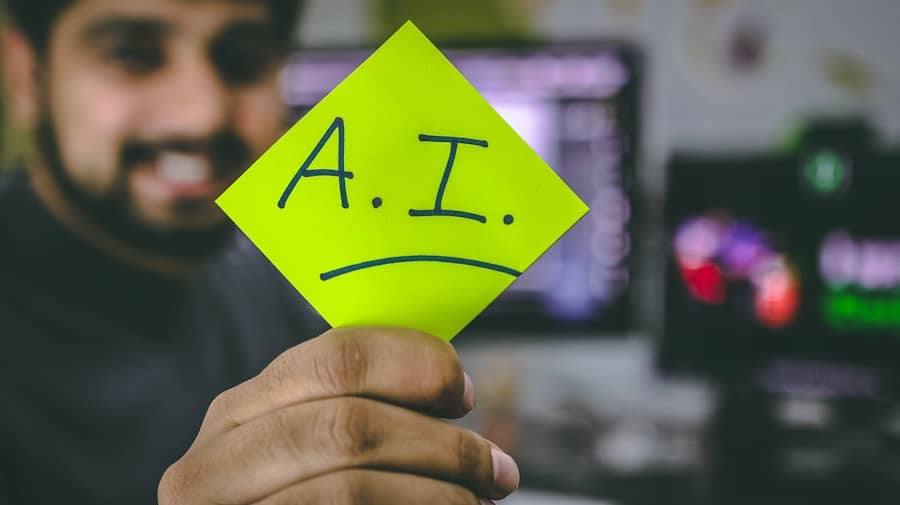The advent of the internet has revolutionized communication, enabling individuals from diverse backgrounds to connect, share ideas, and collaborate in unprecedented ways. However, this digital landscape has also given rise to toxic behavior, which manifests as harassment, bullying, hate speech, and other forms of negative interaction. Toxic behavior can severely undermine the sense of community and belonging that many online platforms strive to foster.
As users increasingly turn to social media, forums, and gaming platforms for interaction, the prevalence of toxic behavior poses significant challenges for both users and platform administrators. Toxic behavior in online communities can take many forms, from overt aggression and personal attacks to more subtle forms of manipulation and exclusion. The anonymity afforded by the internet often emboldens individuals to express themselves in ways they might not in face-to-face interactions.
This phenomenon can create a hostile environment that discourages participation and stifles healthy discourse. As a result, many online communities struggle to maintain a positive atmosphere, leading to a cycle of negativity that can drive away users and diminish the overall quality of interactions.
Key Takeaways
- Toxic behavior in online communities can have a detrimental impact on the overall user experience and community health.
- Artificial intelligence plays a crucial role in detecting and preventing toxic behavior in online communities.
- AI algorithms are designed to identify and analyze patterns of toxic behavior, such as hate speech, harassment, and trolling.
- Despite its effectiveness, AI in detecting toxic behavior still faces challenges and limitations, such as bias and false positives.
- The ethical implications of using AI in moderating online communities raise important questions about privacy, censorship, and freedom of speech.
Understanding the Impact of Toxic Behavior on Online Communities
The impact of toxic behavior on online communities is profound and multifaceted. For one, it can lead to a significant decline in user engagement. When individuals encounter hostility or harassment, they are less likely to participate actively in discussions or contribute content.
This disengagement can create a vicious cycle where the absence of positive contributions further exacerbates the toxic environment, leading to even fewer users willing to engage. Over time, this can result in a community that is not only less vibrant but also less diverse, as marginalized voices may feel particularly vulnerable to attack. Moreover, toxic behavior can have psychological effects on individuals.
Victims of online harassment often experience anxiety, depression, and a sense of isolation. The emotional toll can extend beyond the digital realm, affecting their real-life interactions and mental well-being. This phenomenon is particularly concerning for younger users who may be more susceptible to the negative impacts of online interactions.
The long-term consequences of such toxicity can lead to a generation that is wary of online engagement, ultimately stifling innovation and collaboration in digital spaces.
The Rise of Artificial Intelligence in Detecting Toxic Behavior
In response to the growing challenges posed by toxic behavior, many online platforms are turning to artificial intelligence (AI) as a solution. The rise of AI technologies has opened new avenues for detecting and mitigating toxic interactions in real-time. By leveraging machine learning algorithms and natural language processing (NLP), platforms can analyze vast amounts of user-generated content to identify patterns indicative of toxic behavior.
This shift towards AI-driven moderation represents a significant advancement in the ability to maintain healthy online communities. AI’s ability to process and analyze data at scale allows for more efficient moderation than traditional methods, which often rely on human moderators who may be overwhelmed by the volume of content. Automated systems can flag potentially harmful interactions for review or even intervene directly by removing or muting offending content.
This proactive approach not only helps to protect users but also fosters a more welcoming environment where positive interactions can flourish.
How AI Algorithms Identify and Analyze Toxic Behavior
AI algorithms designed to detect toxic behavior typically employ a combination of techniques that include sentiment analysis, keyword detection, and contextual understanding. Sentiment analysis involves evaluating the emotional tone of a piece of text, allowing algorithms to discern whether the content is positive, negative, or neutral. By identifying negative sentiments associated with specific phrases or words commonly used in toxic interactions—such as insults or derogatory terms—AI systems can flag content for further review.
Keyword detection is another critical component of AI moderation systems. Algorithms are trained on large datasets containing examples of both toxic and non-toxic language, enabling them to recognize specific keywords or phrases that are often associated with harmful behavior. However, the challenge lies in understanding context; a word that may be benign in one situation could be harmful in another.
Advanced AI systems utilize contextual analysis to improve accuracy, considering factors such as user history and conversation threads to make more informed decisions about whether content is indeed toxic.
Challenges and Limitations of AI in Detecting Toxic Behavior
Despite the advancements in AI technology, several challenges and limitations persist in effectively detecting toxic behavior. One significant issue is the potential for false positives—instances where benign content is incorrectly flagged as toxic. This can occur due to the nuances of language, including sarcasm, irony, or cultural differences that may not be easily understood by algorithms.
Such inaccuracies can lead to user frustration and alienation if they feel unjustly targeted by moderation systems. Another challenge is the evolving nature of language itself. Slang, memes, and new forms of expression emerge rapidly within online communities, making it difficult for AI systems to keep pace.
As users adapt their language to evade detection—often referred to as “toxic evasion”—algorithms must continuously learn and update their models to remain effective. This necessitates ongoing training with diverse datasets that reflect current language trends and cultural contexts.
The Ethical Implications of AI in Moderating Online Communities
The use of AI in moderating online communities raises several ethical considerations that warrant careful examination. One primary concern is the potential for bias within AI algorithms. If training data reflects societal biases—such as racial or gender stereotypes—these biases may be perpetuated or even amplified by AI systems.
This could lead to disproportionate targeting of certain groups or individuals based on their identity rather than their behavior. Additionally, there are questions surrounding transparency and accountability in AI moderation practices. Users may not fully understand how moderation decisions are made or what criteria are used to flag content as toxic.
This lack of transparency can erode trust between users and platform administrators, leading to skepticism about the fairness of moderation processes. Ensuring that users have access to clear information about how AI systems operate and how decisions are made is crucial for fostering a sense of community ownership and engagement.
The Future of AI in Detecting and Preventing Toxic Behavior
Looking ahead, the future of AI in detecting and preventing toxic behavior appears promising yet complex. As technology continues to evolve, we can expect more sophisticated algorithms capable of nuanced understanding and contextual analysis. Innovations such as deep learning and neural networks may enhance AI’s ability to interpret language subtleties more effectively, reducing instances of false positives while improving overall accuracy.
Moreover, collaboration between AI systems and human moderators could become increasingly prevalent. While AI can efficiently handle large volumes of content, human moderators bring essential contextual understanding and empathy that machines currently lack. A hybrid approach that combines the strengths of both AI and human oversight may provide a more balanced solution for managing toxic behavior while preserving community integrity.
Strategies for Combating Toxic Behavior in Online Communities with AI
To effectively combat toxic behavior in online communities using AI, several strategies can be implemented. First, continuous training and updating of AI models are essential to ensure they remain relevant and effective against evolving language trends and user behaviors. Platforms should invest in diverse datasets that reflect various cultural contexts and linguistic nuances to minimize bias and improve detection accuracy.
Platforms could implement features that allow users to report toxic behavior while providing feedback on moderation decisions. This participatory approach not only empowers users but also helps refine AI algorithms through real-world input.
Platforms should prioritize initiatives that promote digital literacy and awareness about the impact of toxic interactions. By equipping users with the knowledge and tools needed to navigate online spaces responsibly, communities can cultivate a culture of respect and inclusivity that ultimately reduces the prevalence of toxic behavior.
In conclusion, while AI presents significant opportunities for detecting and mitigating toxic behavior in online communities, it is essential to approach its implementation thoughtfully and ethically. By addressing challenges related to bias, transparency, and user engagement, platforms can harness the power of AI to create healthier digital environments where all users feel valued and respected.
In a related article, Best Music Production Software: A Comprehensive Guide, the importance of utilizing the right tools for creating music is discussed. Just as AI plays a crucial role in detecting toxic behavior in online communities, having the best software for music production can greatly enhance the quality of the final product. Whether it’s designing furniture or remodeling a home, having access to the best software for furniture design or free software for home remodeling can make a significant difference in the outcome of a project.
FAQs
What is AI?
AI, or artificial intelligence, refers to the simulation of human intelligence in machines that are programmed to think and act like humans. This includes tasks such as learning, problem-solving, and decision-making.
How does AI detect toxic behavior in online communities?
AI can detect toxic behavior in online communities by analyzing patterns of language, behavior, and interactions. It can identify hate speech, harassment, bullying, and other forms of toxic behavior by using natural language processing, machine learning, and other algorithms to flag and remove harmful content.
What are the benefits of using AI to detect toxic behavior in online communities?
Using AI to detect toxic behavior in online communities can help create safer and more inclusive spaces for users. It can also reduce the burden on human moderators and help platforms respond more quickly to harmful content.
What are the limitations of AI in detecting toxic behavior in online communities?
AI is not perfect and can sometimes misinterpret or miss toxic behavior. It can also struggle with understanding context and cultural nuances, leading to false positives or negatives. Additionally, AI systems can be biased if not properly trained and monitored.
How can AI be improved to better detect toxic behavior in online communities?
AI can be improved by continuously training and updating algorithms with diverse and representative data sets. It is also important to have human oversight and intervention to address the limitations and biases of AI systems.



